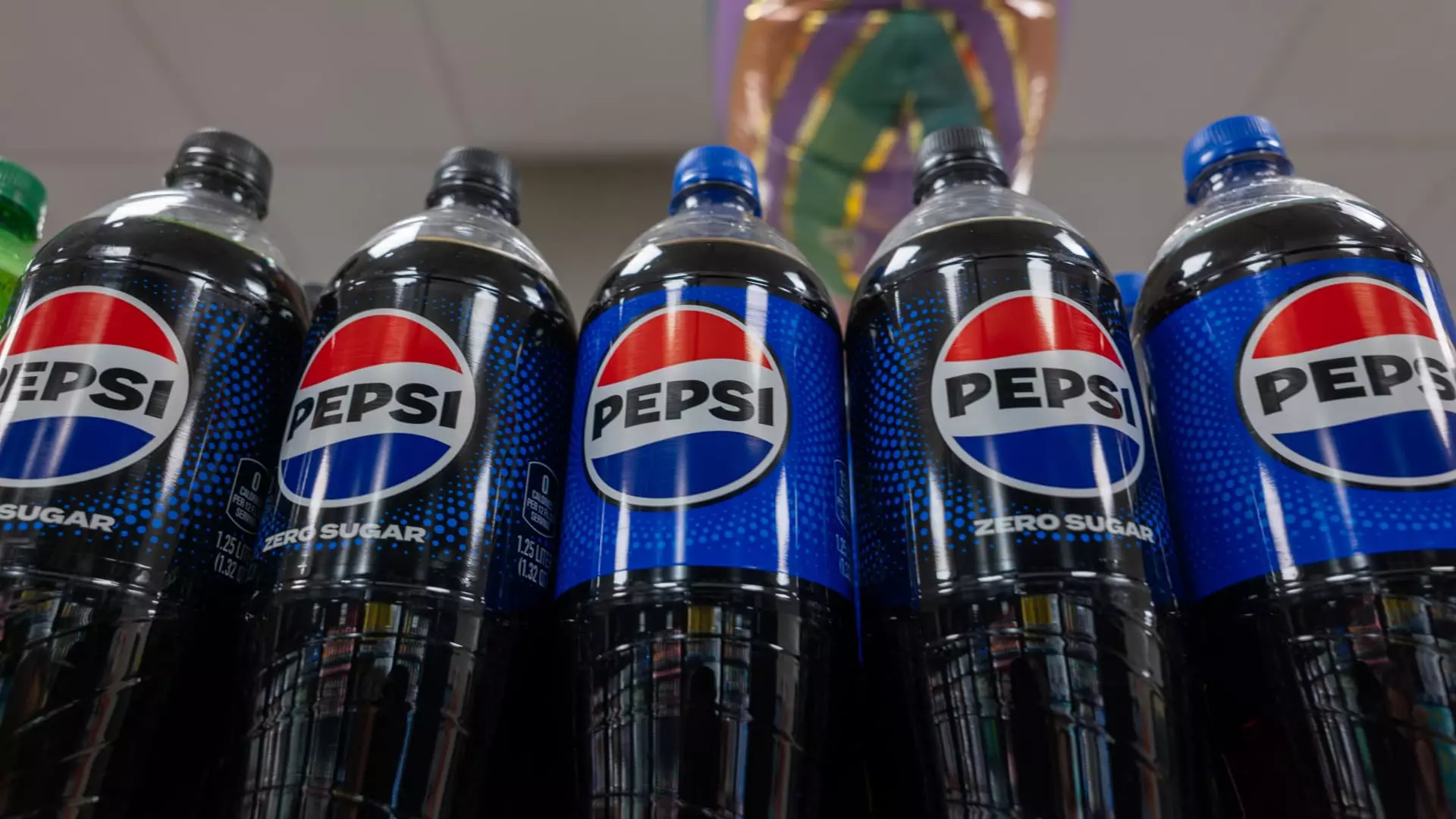In a world increasingly dictated by volatility and uncertainty, PepsiCo’s recent quarterly report serves as a prime example of the precarious balance that corporations must maintain. On one hand, the multinational food and beverage titan showcased international sales that exceeded expectations; on the other, a notable downturn in the North American market raised red flags for investors. As the company navigates a complicated economic landscape filled with tariffs and consumer hesitance, the winds of change may not be in their favor.
CEO Ramon Laguarta articulated this cautious sentiment, stating that the company anticipates “more volatility and uncertainty,” especially with global trade constraints that threaten to hike supply chain costs. This perspective highlights a troubling trend: many corporations are grappling with the realities of a consumer base that is becoming increasingly budget-conscious in the face of inflation. The crux of the matter lies not merely in numbers, but in the growing skepticism from consumers who are tightening their wallet strings.
The Numbers That Matter
Diving deeper into the nutshell of their earnings, PepsiCo’s adjusted earnings per share of $1.48 slightly missed the $1.49 mark that analysts had predicted. So, while revenue figures at $17.92 billion managed to beat expectations of $17.77 billion, the overall narrative is one of disappointment. Reflecting on year-over-year performance yields even grimmer insights: net income fell from $2.04 billion to $1.83 billion, illustrating an evident decline in profitability.
Yet it is not merely about missing projections; it is about the broader implications that this decline signals for the company and the market at large. The organic revenue rise of just 1.2%, alongside a 1.8% drop in net sales, reveals how vital it is for PepsiCo to pivot rapidly to meet evolving consumer demands—or risk further erosion of its market standing.
Consumer Sentiment and Shifting Tides
The consumer landscape is shifting, and PepsiCo seems to be caught in a tide it cannot control. Much of the decline can be attributed to changing shopping patterns driven by inflation. Laguarta and CFO Jamie Caulfield’s observation that “consumers have remained value-conscious” encompasses a larger societal shift. As consumers face rising costs for essentials, many are likely opting for discounted or generic alternatives at grocery stores, effectively squeezing the traditional market players.
In light of these shifts, PepsiCo’s plans to diversify its product offerings and engage more with multicultural products reflect a company attempting to adapt in real-time. The purchase of the prebiotic soda brand Poppi illustrates an earnest intent to capture health-conscious consumers, but will this step be enough to stem the tide of declining sales? The answer remains unclear.
Navigating Forward: Gimmicks or Genuine Changes?
While PepsiCo has outlined steps to improve their North American performance, such plans often come across as reactive rather than proactive. Expanding into healthier and multicultural brands sounds good on paper, but there’s a fundamental question that must be asked: will these strategies deliver the necessary uplift? The competitive landscape is fierce, and merely introducing new product lines may not be sufficient to stave off larger economic woes.
In contrast, the successful performance of products like Pepsi Zero Sugar and growth from brands such as Miss Vickie’s chips signal that when PepsiCo hits the mark, it can indeed thrive. However, this is paradoxical; while certain products are performing well, the company’s overall performance paints a concerning picture. The promising notes amid the earnings report feel like small victories overshadowed by larger struggles.
The Stiff Challenges Ahead
With its forecast for core constant currency earnings revised downwards, PepsiCo’s outlook embodies a larger narrative of a corporate titan facing economic adversity. The company is now staring down a potential stagnation in growth, with projections showing minimal changes in earnings and a modest increase in organic revenue for the year ahead. These adjusted expectations echo the cautionary tales of other companies in similar predicaments: attrition can set in when businesses appear stagnant.
The road ahead for PepsiCo may not only depend on strengthening current products but also on recalibrating its resilience amid uncertainty. A pivotal question remains: can PepsiCo harness innovation and authentic engagement with its consumer base or will it continue to miss the mark? The stakes are high, and the clock is ticking—as evidenced by their plummeting stock values. In today’s tumultuous economic environment, survival demands agility, foresight, and perhaps a bit of luck.


Leave a Reply